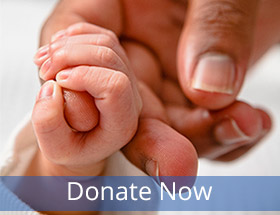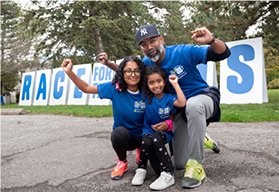From patient to researcher

Mathew Szymanowski was one of the first Sunnybrook patients to receive an innovative nerve transfer surgery for his spinal cord injury. Now he’s studying to help others.
Mathew Szymanowski raises his left arm toward the sky and then bends his elbow like he’s preparing to scratch his back.
“They took nerves from a muscle that was working and connected them to another muscle that wasn’t so I can do this,” he says, his face breaking into a wide smile. “It means I’m able to be more independent and I’m grateful for that.”
Mathew was one of the first Sunnybrook patients to receive nerve transfer surgery to help restore hand and arm function following a spinal cord injury. Nerve transfer surgery is fast becoming the gold standard treatment for proximal peripheral nerve injuries – damage to the nerve tissue caused by a cut or tear, for example. Only recently has it been adapted for people with cervical spinal cord injuries.
Applying a world-first technique
Sunnybrook plastic and reconstructive surgeon Dr. Jana Dengler learned the specialized technique from a former Sunnybrook surgeon, who was also the first in the world to apply it in a spinal cord case with positive results.
Dr. Dengler is currently the only Toronto surgeon to offer the treatment for patients with paralysis following a spinal cord injury – and one of just a few in Canada with this expertise. She is sharing her learnings and actively training more people.
“There’s a lot of research underway involving stem cells and electrical stimulation for people with cervical spinal cord injuries, but this intervention has shown the most promising result – by far,” says Dr. Dengler, who operated on Mathew in two separate surgeries in February and March 2020, six months after his injury in a cycling accident.
Over the course of each six-hour-long operation, she redirected nerves to allow the now 27-year-old to open and close his fingers and activate the triceps muscle required to lift his arms.
Flicker of hope
Within six months, about the time it takes for the nerves to grow and start to form new connections to muscle, Mathew started to notice “flickers” of movement in his hand.
“To start to see progress again was very motivating,” he says.
Today, Mathew is not only able to lift his arms, he can also open doors, grasp items and even operate a manual wheelchair – something he says has changed his life. “I can transfer into a car and just put the wheelchair in the back, so I can travel with family and friends. That’s really big.”

Finding his purpose
Mathew is also using his newly acquired mobility to return to school. A University of Victoria engineering student prior to his injury, Mathew is now studying biomedical engineering at Toronto Metropolitan University. He hopes to become a spinal cord researcher, seeking out solutions to challenges like the ones Dr. Dengler helped resolve for him.
“A big goal after being injured is finding purpose and seeing how you might contribute to society,” says Mathew. “Having this procedure at Sunnybrook helped me to find my purpose. It’s making school and a whole lot more possible.”








